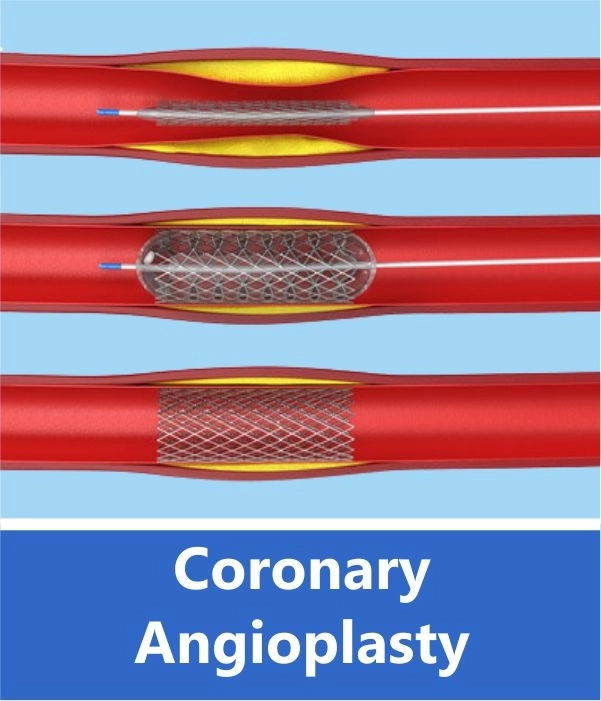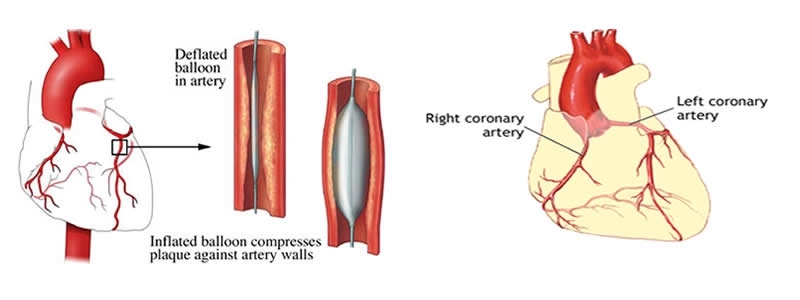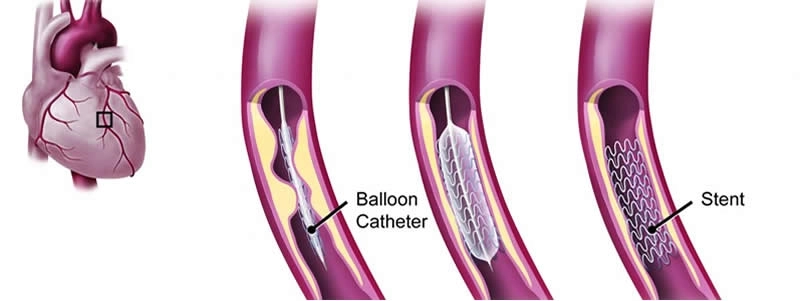

Coronary Angioplasty

Coronary Angioplasty is a medical procedure in which a balloon is used to open a blockage in a coronary (heart) artery narrowed by atherosclerosis. This procedure improves blood flow to the heart. Atherosclerosis is a condition in which a material called plaque builds up on the inner walls of the arteries.Over the last two decades, coronary angioplasty, stenting, and other percutaneous procedures have revolutionized the treatment of coronary artery disease. The anatomy of the coronary arteries is defined by Coronary Angiography.
While the standard method of coronary angiography is via puncture of the femoral artery in the groin, it is now possible to perform coronary angiography and angioplasty via the radial artery in the hand. This makes it very convenient for the patient, as it does not require complete bed rest, and the patient can be discharged within a few hours. A coronary balloon is initially used to dilate the Stenosis in the coronary artery and make the way for implantation of a stent.

Stents are metallic springs, usually made of stainless steel, which are positioned inside the coronary arteries, so as to prevent the artery from closing down after balloon angioplasty. Stents are also known to prevent the recurrence of restenosis and re-blockage of the coronary arteries. Newer stents are coated with special drugs such as Rapanycin or Paclitaxel, which have markedly decreased the incidence of restenosis and made coronary angioplasty a preferred mode of treatment for coronary artery disease. It is safe to say, that nowadays, with the availability of medicated stents, patients of coronary artery disease will be sent to surgery only if angioplasty is technically not possible.

